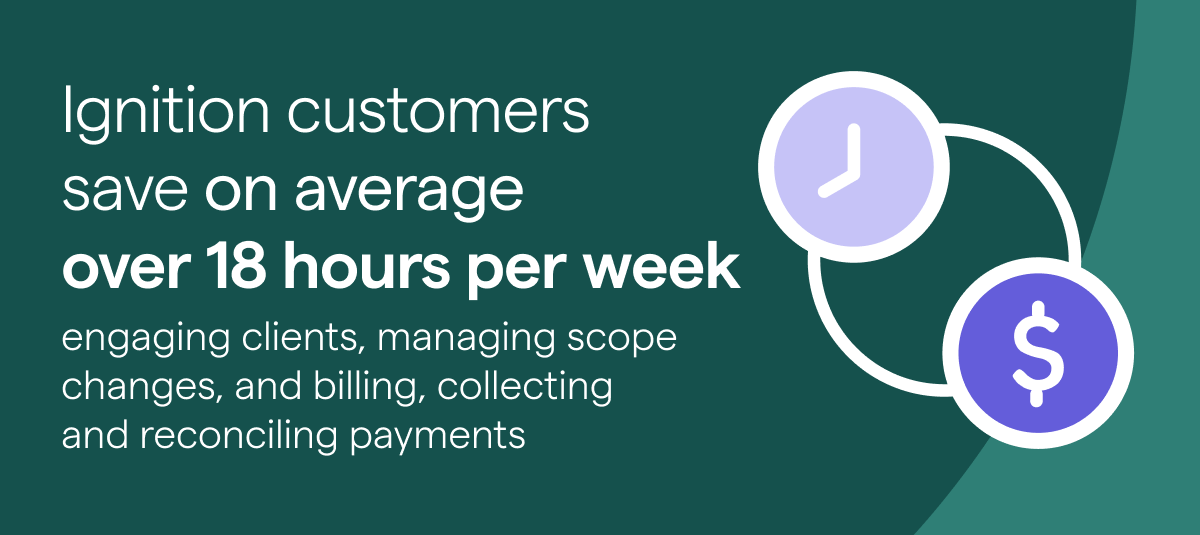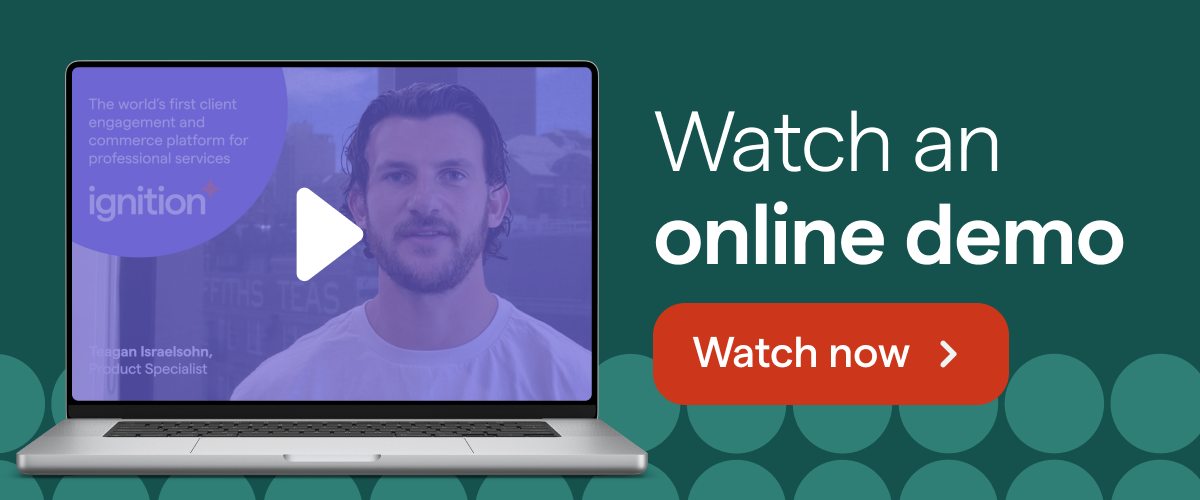How to re-engage clients successfully

Most bookkeepers and accountants would agree that keeping clients coming back is critical to success. When you're generating repeat business, you can achieve better predictability with your revenue, helping you run your firm more efficiently. And since it's typically up to 5 times less expensive to retain existing clients than to acquire new ones, having a steady stream of repeat clients also leads to higher profits.
That being said, driving repeat business consistently doesn't happen by accident. Strong client retention stems from having an excellent re-engagement strategy – which is exactly what we'll talk about below.
In this article, we'll share pointers that accountants and bookkeeping professionals can follow to re-engage clients, reduce churn and keep them coming back.
1. Identify the clients you want to re-engage
The first step to successful client re-engagement is determining which clients you want to continue working with.
As Joshua Lance, Head of Accounting at Ignition, puts it, "just because this was a good client three years ago does not mean they are a good fit for your firm now." Think about the state of your business and where you want to go, then make sure you're working with clients who align with your goals and objectives.
If you're using Ignition, you can use the Pipeline Report to gain visibility into this. "The Pipeline report is great because you can see what engagements are ending in the next 90 days and provides you with information in advance of when you need to adjust and re-engage," adds Joshua.
He continues, "identify what clients are no longer the right fit and reach out to those clients to let them know that you will no longer be working with them, so they have enough time to find a new accountant."
From there, you can work on actively re-engaging those customers who are a good fit.
2. Schedule a re-engagement conversation sooner rather than later
One of the biggest mistakes you can make during the re-engagement process is to put it off until the last minute. According to Joshua, this creates a poor experience and "will cause your client to potentially be upset by the changes being made."
"Generally, you need to start the process at least a couple of months in advance. This provides time to assess if you want to retain the client and figure out pricing. You will also want to communicate your re-engagement plans at least 45-60 days prior to re-engagement to allow time for discussion and client acceptance."
Emma Crawford-Falekaono, Managing Director, EMEA at Ignition, offers similar advice and says that "having the conversation early" is a must. She recommends doing it around "3 months ahead where possible."
As for the length of the conversation, aim to book a 60 to 90 minute meeting. In-person is ideal, but if it's not possible, you can opt for a virtual call instead. It may also help to factor in the specific client relationship, what the client is familiar with and their preferred communication methods.
"This would also be dependent on how you segment your customer base," says Emma. "Higher-value clients may call for a more personalized approach."
3. Revisit your scope and accomplishments
Already have your meeting scheduled? The next step is to iron out your agenda. The first part of the conversation should center around:
The services you provided/are providing in your current engagement
What they thought of your work
The value that the client gained out of your engagement
4. Ask about the client's goals
It helps to take a forward-thinking approach to your client re-engagement conversation. After revisiting your past or current engagement, take the time to discuss what's next for the client.
Ask them about their goals and what they have in store for the business in the coming months or years.
Depending on their response, you can use this as a chance to expand the scope of your agreement.
Suppose a client tells you they'd like help expanding their operations. They want to open a few more retail stores and will therefore also need to hire new staff members.
Hearing this, you propose they sign up for an advanced financial management package. This includes regular monthly catch-ups with your team where they'll run through the client's finances before advising them on next steps, payroll assistance for their growing team, setting up credit control systems to improve their cash flow, and so on.
Taking this step demonstrates proactiveness on your part, which earns you additional points with the client. By taking the time to listen to their specific ambitions and tailoring your services accordingly, you are showing the client you're not just a service provider – you're a trusted partner.
This elevates your status within their business, which then goes a long way to creating long-term customer loyalty.
5. Discuss your pricing
Don't let the re-engagement meeting end without bringing up pricing. While this part of the conversation can be a little awkward, accountants and bookkeepers simply cannot afford to skip this step.
As Josh points out, "by not increasing pricing, you are putting financial strain on your firm and yourself. With increased labor and software costs across the board and scope creep issues, it is a good time to increase your pricing and be firm with that decision."
The good news is that if you've effectively communicated your value through the best practices above, then discussing your new rates will be relatively straightforward.
That's why Emma recommends "pinning the conversation around value provided to the client."
"Clients are happy to pay if they can see the value of the services," she adds.
Now, if you do get pushback on your prices, it's a good idea to provide clients with additional ways on how they can continue working with you.
"[The way] I recommend handling this with clients is to provide three options," remarks Josh. "One option keeps your current price, but reduces scope to fit that price, one keeps the same scope and increases price and the third one is your reimagining of what you think the scope should change to and the price with that new scoping."
- Keep your current price and reduce the scope of work.
- Keep the scope the same and increase your price.
- Reimagine the scope of work and update the pricing to reflect that new scoping.
You can craft a modified engagement and proceed accordingly, depending on what the client says.
6. Maintain consistency with your re-engagement strategy
Whether you're speaking with a few clients at a time or having several conversations over a given period, it's essential to keep your re-engagement strategy consistent.
"Not having a consistent approach or process across the business and client base" should be avoided, says Emma.
Aside from creating a less-than-stellar client experience, failing to have standardized re-engagement processes also makes things more difficult for you, the service provider. When your procedures aren't well-documented or are different every time, you can miss certain steps and even create confusion within your team, ultimately diminishing your efficiency and lowering profitability.
So, strive to standardize your re-engagement strategy. Document your procedures and use client engagement software to automate certain steps.
Ignition, for example, has several features that can streamline your client re-engagement processes. The software offers legally vetted templates to help you craft engagement letters that are both compelling and compliant.
And with automated reminders, digital signatures, and built-in billing capabilities, you can get your engagement letters signed ASAP, while ensuring you get paid for your work.
Standardization and automation can also save you and your team a significant amount of time. Industry data shows more than forty percent of workers spend a quarter of their week on manual activities. By streamlining tasks like sending engagement letters and reminders, you and your team can free up time for higher-value activities.
How to re-engage inactive or churned clients
While it's best to re-engage clients while they're still active, you may also wonder how you can breathe new life into dormant accounts. To that end, we've put together a few tips to help you reconnect with inactive and churned clients.
1. Do research before your outreach
Before popping into your client's inbox, do some research to tailor your approach. Look at their current website and explore their social media profiles to see if anything has changed since you last worked with them.
2. Verify the best contact
It also helps to research the right point of contact. Depending on how long you've been out of touch, your original contact may have left the company. You can maximize the success of your outreach by simply verifying the best individual to connect with.
3. Write a well-thought-out re-engagement email
Your re-engagement email should be concise with a touch of personalization. Use this message to communicate why your services are a good fit for their business and make it easy for people to respond by having a clear call to action.
Consider the template below.
Email template to re-engage inactive customers
Hi [NAME] —
It's been a while, but I hope things are going well at [COMPANY NAME]. I've recently looked into your business and saw you just introduced a new product. I think that's terrific news! [REPLACE THIS SECTION WITH A PERSONALIZED OBSERVATION].
I know we haven't spoken in a while, but we've had an excellent working relationship in the past, and I wanted to take this opportunity to introduce some updates that I think would benefit [COMPANY NAME].
Since we've last worked together, we have [INSERT UPDATES RELEVANT TO THE PROSPECT. This could be a new product, service, process, etc.].
It would be great to have a conversation so we can catch up on what's new in your business. Are you available this week to chat? Feel free to schedule a call at your earliest convenience.
Looking forward to speaking with you,
[YOUR NAME]
Over to you
Crafting an effective client re-engagement strategy offers a host of benefits for your business – including greater levels of productivity, higher profits, and less stress. That’s why it pays to adopt tools and processes that make client re-engagement a breeze.
Ignition is one tool that can help! Watch a demo today to see the software in action and discover the tools that can help you keep clients coming back.

